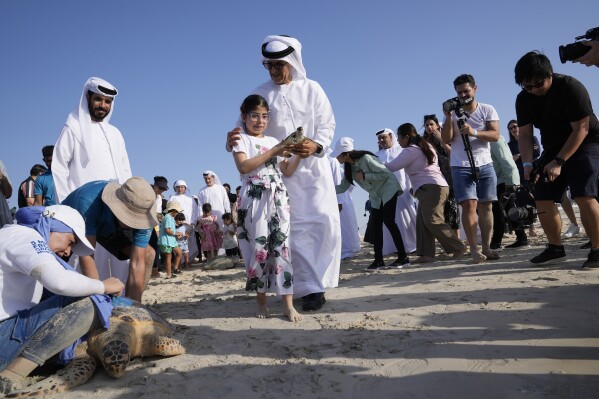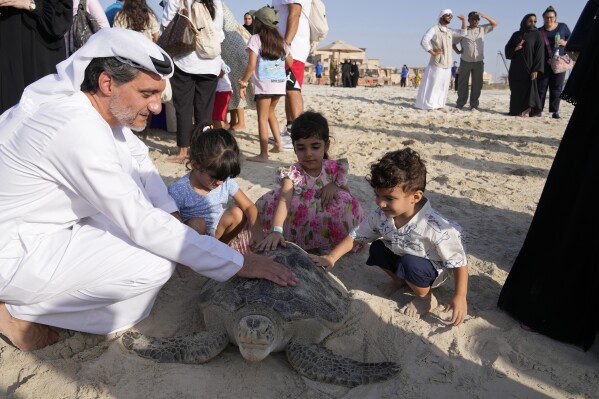The United Arab Emirates has taken a major step in supporting global efforts to protect the environment. In a powerful move, the UAE officially signed the United Nations High Seas Treaty, a historic agreement aimed at protecting the world’s oceans.
This important treaty was designed to safeguard marine life in international waters, or the “high seas.” These areas are outside the control of any single country and make up nearly two-thirds of the world’s oceans. The treaty’s goal is to protect 30% of these waters by the year 2030.
By signing this treaty, the UAE has committed to helping the world slow down the rapid loss of marine biodiversity—the wide variety of plants, animals, and ecosystems found in our oceans. The move shows the country’s growing leadership in environmental conservation and climate action.

What Is the High Seas Treaty?
The UN High Seas Treaty, also known as the Biodiversity Beyond National Jurisdiction (BBNJ) agreement, is one of the most important environmental deals in recent history. It was finalized in 2023 after years of talks among more than 100 countries.
Until now, international waters had few clear rules to protect nature. That made it hard to control overfishing, deep-sea mining, and pollution. The new treaty brings in a legal framework that allows countries to:

- Set up protected areas in the high seas
- Carry out environmental impact assessments before doing industrial activities
- Share marine resources fairly
- Monitor and manage biodiversity loss
This treaty could be a game-changer in fighting climate change, pollution, and the damage caused by human activity to the oceans.

Why This Matters for the UAE
The UAE has a deep connection to the sea. Its history, culture, and economy are closely linked to the ocean—from traditional pearl diving to fishing and modern shipping. Signing this treaty is not just about global responsibility; it’s also about protecting the UAE’s own marine heritage.
Over the years, the UAE has made many efforts to protect the environment, including launching marine reserves, banning harmful fishing practices, and investing in renewable energy. By joining the High Seas Treaty, the country is showing that it is ready to be part of international action to save the planet.
Dr. Amna bint Abdullah Al Dahak, Minister of Climate Change and Environment, said this decision supports the UAE’s National Biodiversity Strategy. The country is already planning long-term actions to protect land and marine ecosystems through scientific research, sustainable management, and partnerships with other countries.
Global Support and Shared Goals
The High Seas Treaty is part of a bigger vision called the Global Biodiversity Framework. More than 190 countries agreed to this plan in 2022, with a target to protect at least 30% of the planet’s land and oceans by 2030. This goal is often called the “30×30 target.”
The UAE’s support adds strong momentum to this global mission. The country’s voice carries weight, especially in the Middle East, where environmental challenges like water scarcity, rising temperatures, and pollution are growing.
The UAE’s action also sends a message to other nations in the region: it’s time to step up and protect nature together.
How Will It Work?

With the treaty signed, the UAE will now help put its rules into action. Here’s what that might involve:
- Establishing marine protected areas (MPAs) in international waters
- Joining global scientific missions to study ocean life
- Contributing to funds that support conservation and research
- Working with other countries to stop illegal activities at sea
This treaty could help stop harmful actions like deep-sea mining, which can destroy fragile ecosystems, and overfishing, which puts marine species at risk. It will also promote sustainable use of ocean resources, making sure that future generations can still enjoy and benefit from the sea.
What’s Next for the UAE?
The High Seas Treaty still needs to be ratified by many countries before it can come into full effect. The UAE’s early signing shows its strong commitment, and it will likely play a leading role in encouraging others to join.
As part of its broader green goals, the UAE is also preparing for future climate summits, sustainability events, and international talks. The country continues to position itself as a global hub for climate action, innovation, and clean energy.
This step adds to the UAE’s strong environmental track record, which includes:
- Hosting COP28, the major UN climate summit, in 2023
- Setting a national goal of reaching net-zero emissions by 2050
- Investing in coral reef protection, mangrove restoration, and eco-tourism
A Global Ocean for All
The ocean connects us all, no matter where we live. It provides food, oxygen, and even helps regulate the Earth’s climate. But today, it is under threat—from plastic waste to rising temperatures and industrial exploitation.
The UAE’s move to sign the High Seas Treaty is a clear sign that change is possible when countries come together. It also shows that protecting the planet is not just a job for big nations or environmental groups—it’s something that every country, big or small, rich or developing, can take part in.
Also read: UAE’s Public Schools Get a Smart Upgrade with New E-Learning Platform














